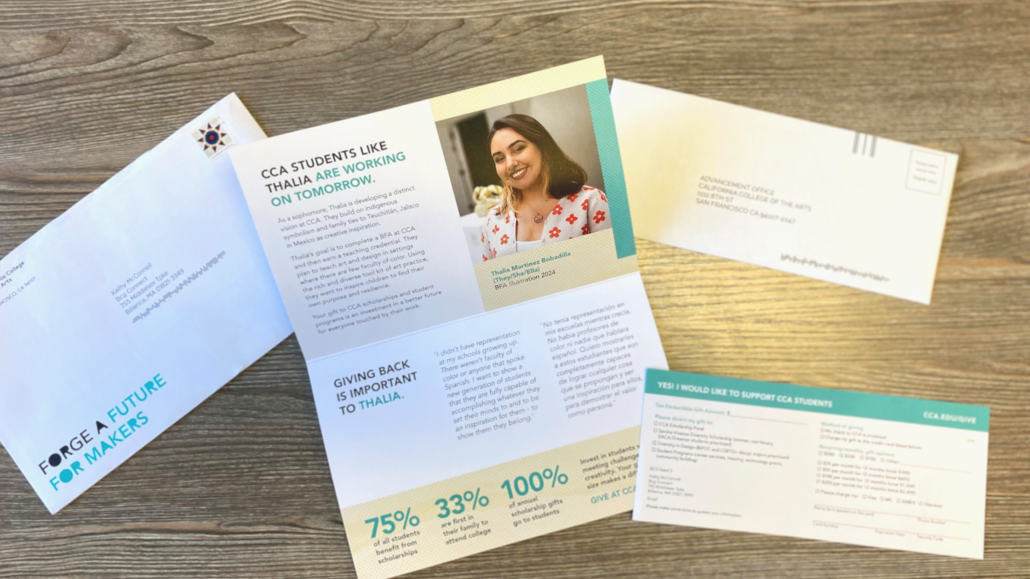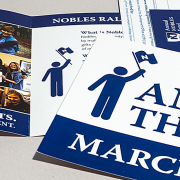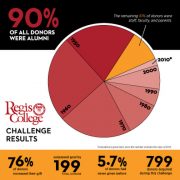Self-mailer vs. a Letter: Why choose?
Ahh, the infamous question: self-mailers vs. letters for your next appeal?
Self Mailers vs Letters – Which is best for you?
Direct mail formats should be more strategic than just following personal preferences.
Meanwhile, it’s visible, it’s direct, and it gets noticed. The direct mail format is a key component of your direct mail campaign. It’s your physical link to your donors. One thing that has to be taken into consideration is the choice of format. Though you may have some idea of what type of layout to use, the best decision will depend on:
- objectives
- donor segments
- your budget
Introduction: What is the difference between a self-mailer and a letter?
Let’s first look at the classic. Often considered formal communication, the letter develops a personal connection between the nonprofit and the donor. Then, there’s the self-mailer. Sometimes seen as an informal way of communicating, the self-mailer takes more creative liberties than the classic letter.
This all seems obvious, of course.
But what difference does it mean to the nonprofit looking for donations?
The Benefits of Using Self-Mailers
Self mailers are a great way for nonprofits to share imagery through stories and graphics. They are a low-cost and effective option.
But you know that already.
What are the benefits of self-mailers for nonprofits?
Sending a self-mailer to your donors has many benefits. You can highlight your annual report, tell donors about the most recent achievements of your nonprofit, share upcoming events and more. With variable printing and segmenting your data, you can even illustrate through imagery, as well as the text of each self-mailer.
A successful self-mailer is one that calls out the recipient by name within the headings. Adding other personal information, such as grad year, is another way of personalizing your self-mailer.
However, self-mailers are associated with retail companies.
So, could that be why some institutions and organizations swear by letters?
Engaging Vehicles for Letters
Envelopes are not just a container for letters. They are a vehicle for delivering an emotional connection to the letter, which is what makes them so engaging.
Envelope design can be an important part of a letter’s success. Designers have to consider how the recipient will handle the envelope and if they will open it.
Since an envelope is the first thing that people see when they receive a letter in their mailboxes, it’s often the only thing that people see before they open up the letter and read what is inside of it.
3 Reasons Nonprofits Use Letters over Self-Mailers
Letters allow you to show a sense of value and importance. Letter and envelope combinations have the room to tell your compelling story to your target audience about your nonprofit. Let’s take a closer look at why letters work:
-
Tell your story with an interesting type of font that creates call-outs throughout your letter.
-
Add a detachable reply card at the bottom of your letter. Simplify the steps a potential donor needs to take. Creating a process for donations will increase the chances of your target audience to donate.
-
Add imagery. Take the same visual approach that a self-mailer uses by adding images and iconography to your letter.
Now what?
The Hybrid version with Letters and Self-Mailers
Many of our clients are using “self-mailers” in envelopes. I suppose it’s no longer a self-mailer, but you understand what I mean. This way, they get the benefits of both the letter and the “self-mailer” by using an envelope. So why is this becoming more popular?
In addition, it’s the best of both worlds. You now can include all the imagery you want, tell the story you want to tell, and add your business reply envelope.
Here’s an example of a folded card with a reply card, a reply envelope, and an outer envelope. While it’s not really a “self-mailer,” it uses all the elements a self-mailer would employ.

Conclusion: How to Choose which one is right for you
In short, if you’re questioning self-mailers vs. letters, and you have the budget, perform a test. Be sure to send to equal numbers of your letters vs. self-mailers. You don’t have to split your mail down the middle. Always use one targeted segment for the test. The remaining segments can use whichever version you prefer.
But, if you don’t have the budget to test, consider the hybrid model. At BCG Connect, we create multiple versions of direct mail pieces. From letters to self-mailers to the hybrid, we design, print, and mail them all. Reach out to use today!












